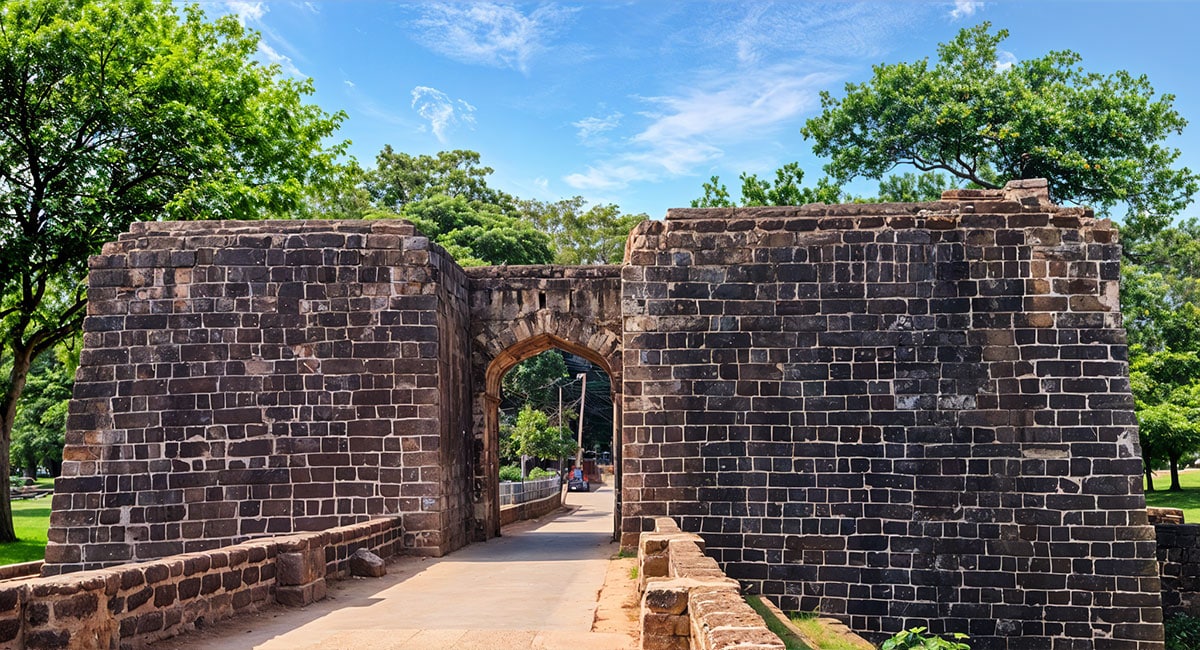Barabati Fort: Witnessing the Glory of Odisha’s Past
Barabati Fort, a magnificent historical site in Cuttack, Odisha, is a testimony to the state’s rich cultural heritage. With its grand structure and historical significance, this fort attracts history buffs, archaeologists, and tourists alike. Situated along the banks of the Mahanadi River, the fort has witnessed centuries of political turmoil, battles, and royal grandeur. This blog examines the history, architecture, and significance of Barabati Fort, highlighting why it remains an essential destination for history enthusiasts.
Historical Background of Barabati Fort
The history of Barabati Fort begins in the eleventh century, when the Eastern Ganga Dynasty was in power. In the 13th century, King Anangabhima Deva III built it as a nine-story palace. Over time, the fort became a crucial seat of power for various dynasties, including the Gajapatis, the Mughals, and the Marathas, before eventually coming under British control.
The strategic location of Barabati Fort made it a prized possession for rulers who sought dominance over Odisha. With its royal courts and military institutions, it was crucial to protecting the area. Despite its partial ruins today, the fort symbolizes Odisha’s glorious past.
During the Gajapati rule, the fort served as an administrative and military center, showcasing the strength of Odisha’s rulers. However, with the arrival of the Mughals, Barabati Fort underwent significant modifications. The Marathas later took control, adding to its architectural and strategic significance. Eventually, under British rule, the fort lost its former glory, and today, only remnants of its grandeur remain.
Architectural Marvel of Barabati Fort
Although much of Barabati Fort lies in ruins today, its remnants still reflect the grandeur of its original structure. The fort was built using laterite stone and covered a vast expanse of 102 acres. Some of its notable architectural features include:
- The Fort Walls and Moat
A considerable moat encircled the fort, adding another line of defense against intruders. The walls were thick and sturdy, designed to withstand attacks from enemy forces. Even today, visitors can see parts of the fortification, offering glimpses into its formidable past.
- The Main Gate
The entrance gate of Barabati Fort is an impressive structure showcasing complex carvings and designs. It reflects the fine craftsmanship of ancient Odisha and hints at the opulence that once existed within the fort’s premises.
- The Temple Ruins
One can find the remnants of an old temple within the fort complex. This temple, dedicated to Hindu deities, signifies the religious and spiritual inclinations of the rulers who resided here. Historians believe that the temple played a crucial role in the daily lives of the fort’s inhabitants, serving as a place of worship and spiritual gathering.
- The Barabati Stadium
Officials have repurposed a part of the fort complex into the Barabati Stadium, a well-known venue for cricket and other sports events. This modern adaptation of the historical site uniquely blends the past and present.
Significance of Barabati Fort
- A Historical Landmark
It is one of the most significant historical sites in Odisha. Its connection with various rulers and empires makes it a crucial site for understanding the region’s past.
- Tourist Attraction
Today, Barabati Fort is a popular tourist destination. People from across the country visit the site to witness its ancient ruins and enjoy the scenic views of the Mahanadi River. The fort’s historical importance and picturesque setting make it an ideal spot for sightseeing and photography.
- Cultural and Religious Importance
The temple ruins within the fort indicate the past rulers’ deep-rooted spiritual and religious beliefs. Many locals still consider the site sacred and occasionally hold religious ceremonies here.
- Archaeological and Research Significance
Archaeologists and historians frequently visit Barabati Fort to study its structural remains and gather insights into ancient fortification techniques, governance, and lifestyle during medieval times.
Best Time to Visit
The best time to visit Barabati Fort is between October and February, when the weather is pleasant and suitable for exploration. During these months, the fort and its surroundings offer a picturesque view, making it ideal for photography and sightseeing. Summers in Odisha can be hot and humid, making it less comfortable for visitors to explore the fort’s ruins.
Preservation Efforts and Challenges
Despite its historical significance, It is has faced several challenges. Natural wear and tear, encroachments, and inadequate conservation efforts have led to its gradual deterioration. However, recent initiatives by the Archaeological Survey of India (ASI) and local authorities aim to restore and preserve the fort’s remaining structures.
Authorities are raising awareness about the fort’s importance, encouraging locals and tourists to contribute to its conservation. Organizations occasionally arrange events and heritage walks to promote interest in Odisha’s rich history.
Final Thoughts
It symbolizes Odisha’s rich history and architectural prowess. Despite the effects of time, it still draws tourists, scholars, and history buffs. The fort’s remnants narrate the story of Odisha’s past rulers, their victories, and their grandeur. Visiting Barabati Fort is a walk through ruins and a journey into the glorious chapters of Indian history.
Whether you are a history buff, an architecture enthusiast, or a casual traveler, Barabati Fort promises an enriching and awe-inspiring experience. Plan your visit to this historical marvel and immerse yourself in Odisha’s heritage. By exploring this fort, you not only witness the architectural brilliance of the past but also pay homage to the legacy of the many rulers who shaped the history of this magnificent land.


